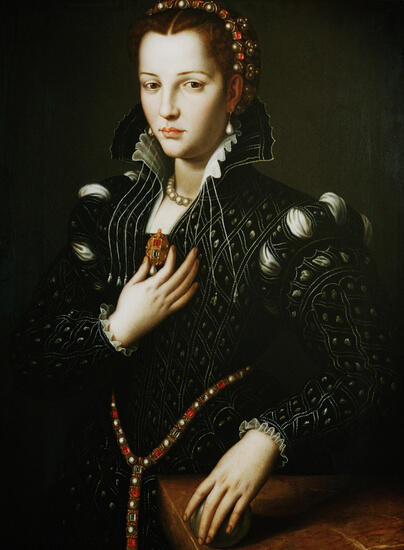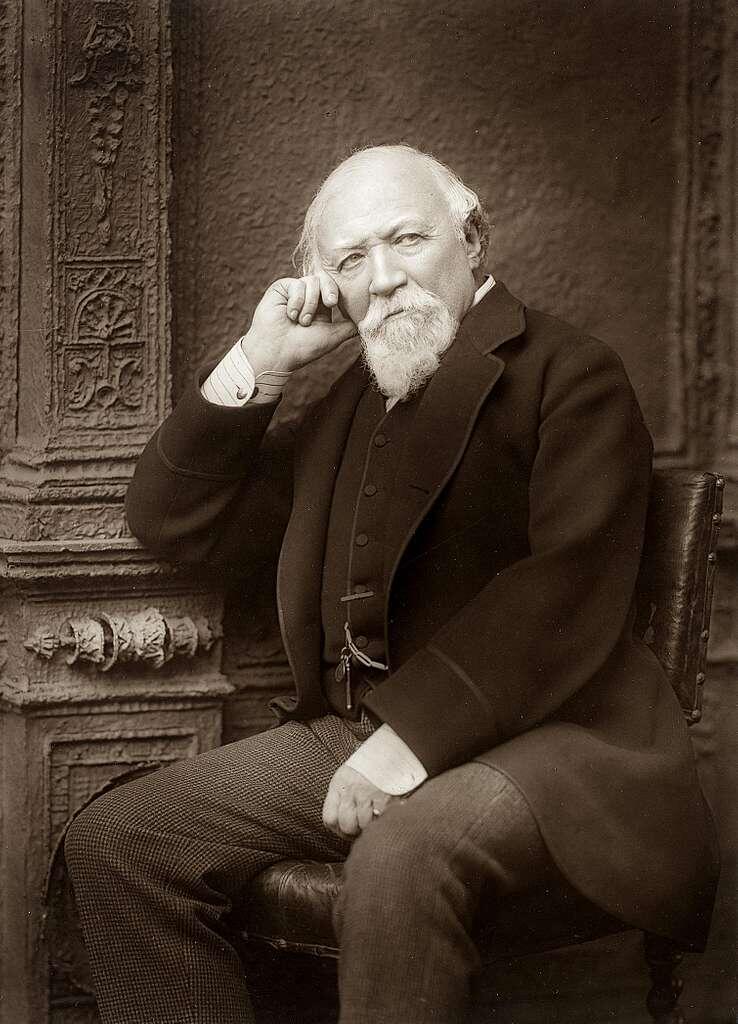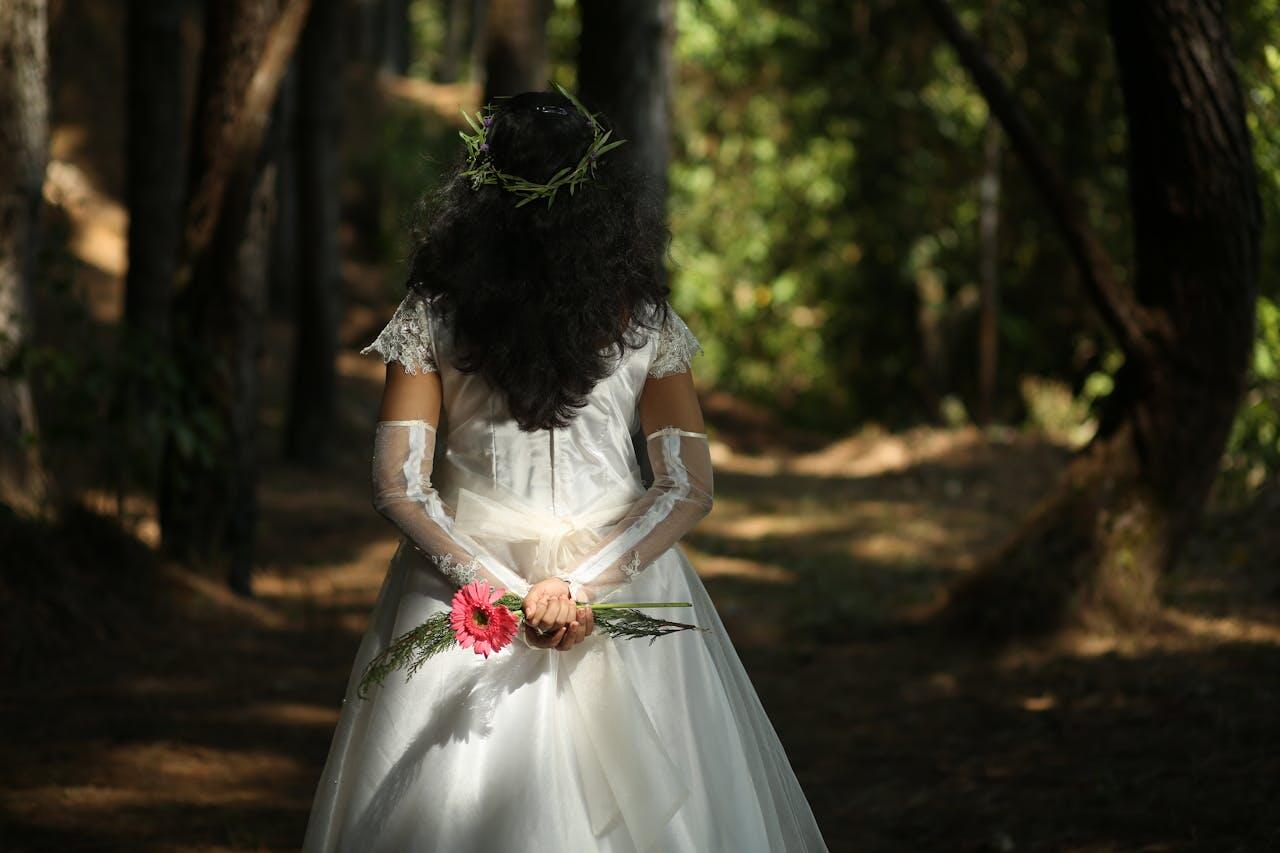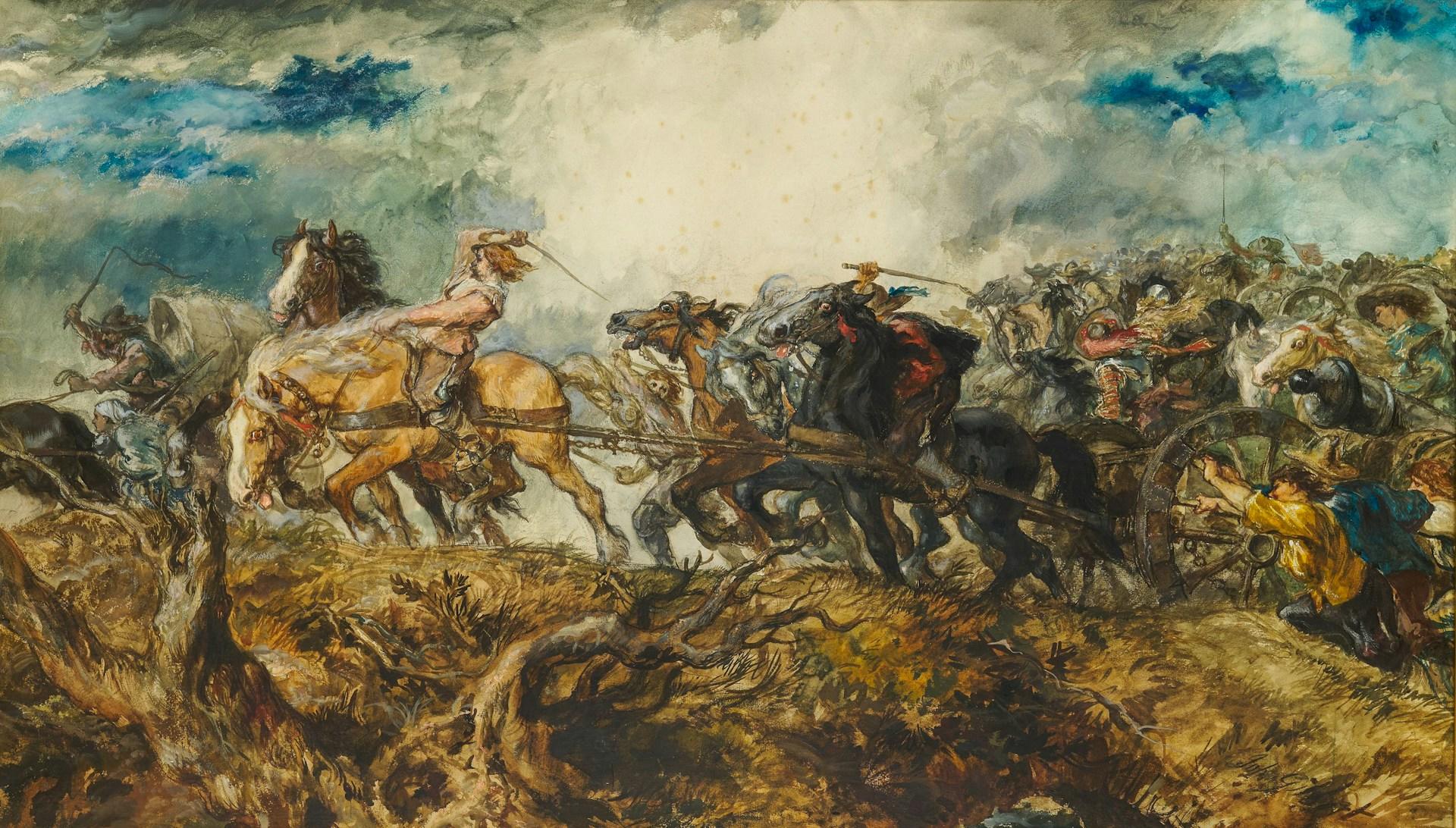As a GCSE student, you probably want to dive deep into every poem that'll be tested in your English Literature paper, from its context, themes, form, structure, and language, to help you get the best possible grade. In this article, we'll be focusing on My Last Duchess by Robert Browning, who was a Victorian-era English poet and playwright.
5 Key GCSE Takeaways for My Last Duchess
- Browning sets My Last Duchess in Renaissance Italy, but uses that historical setting to reflect issues in the Victorian era.
- The themes of the poem centre around power and control, gender objectification of women, pride, possessiveness and jealousy.
- The poem is a dramatic monologue and has an iambic pentameter with rhyming couplets.
- Browning uses different language techniques to reveal the Duke's true character.
- When structuring your exam response, always follow these steps: Point, quotation, analysis, and context linking.

📜 Context of My Last Duchess
If you have briefly read the poem, you'll notice that the poem centres around two characters: The Duke and his late Duchess. While describing a portrait of his late wife, it was suggested that he was the ultimate culprit behind her death.
My: Possessive pronoun
Last: Not the present (could imply that she's no longer alive)
Duchess: Emphasis of title (After marriage)
We can't fully understand what the poem is about without exploring the historical and cultural contexts of the poem. This will allow us to identify the poet’s purpose in writing it, which can then be interpreted through the significance of its themes, language, form, and the characters presented.
🕰️ Historical context
- Poem setting: Italian Renaissance period
- Location setting: Ferrara, a city in Italy (as indicated at the beginning of the poem)
- Characters in the poem: Believed to be the Duke and Duchess of Ferrara
- Writing setting: The Victorian era in 1842 (when Browning published the poem in the United Kingdom)
🌍 Cultural context
- The Italian Renaissance showcased the importance of art among the privileged society, especially through portrait painting
- During that time in Italy, art, wealth, and social hierarchies were highly prioritised, alongside patriarchy
- Wives were viewed as their husbands' property
- In the Victorian era, industrialisation began to change women’s roles, but society was still patriarchal and oppressive towards them
As readers, you may wonder why Browning chose the Italian Renaissance as the historical setting when he was a Victorian poet.
His purpose in presenting these contexts was to draw connections between history and the social issues of his own time.
By setting the poem during the Italian Renaissance in the city of Ferrara with actual characters from the rich society (the Duke and Duchess of Ferrara), Browning was able to explore different themes to reflect and highlight the oppression and lack of freedom faced by women during the Victorian era in his own home country from a "safe distance", which we will discuss next.

Open my heart and you will see Graved inside of it, "Italy".
Robert Browning
💭 My Last Duchess Themes
After reviewing the poem’s context, we can now discuss some of the key themes that Browning explores throughout My Last Duchess. We can divide the themes into two categories: Societal themes and personal emotion themes.
Browning was well-versed in Italian culture and history, and after marrying Elizabeth Barrett (also an established English poet), he settled in Italy.
🏛️ Societal Themes
These two themes set the foundational structure of the poem. Browning cleverly offers his critiques of Victorian-era society through a story that possibly took place during the Italian Renaissance.
🔥 Power & Control
The painting of the duchess by a famous painter, Fra Pandolf and the Neptune statue at his home (as a symbol of submissiveness)
👗 Gender Objectification of Women
💔Personal Emotion Themes (Duke's inner conflict)
These two emotions were strongly reflected and demonstrated throughout the poem by the Duke. Eventually, readers would see the relationship between the societal and personal emotion themes.
👑 Pride
He was not willing to communicate with his wife: "I choose / Never to stoop.”
😡 Posessiveness and Jealousy
He even became jealous of the friar who painted her portrait, suggesting how possessive and insecure he was.

🧩 Analysis of Form, Structure & Language
First, let’s explore how different elements of poetry enhance the richness of My Last Duchess. We'll be focusing on these three elements:
✅Form
Poem's type
✅Structure
Poem's arrangement
✅Language
Poem's description
This poem's form is a dramatic monologue, which means it’s one person speaking through the whole poem. The dramatic monologue serves as a tool for revealing the inner workings of this character, who has demonstrated a self-centred and ego-driven nature.
Because it’s a dramatic monologue, this poem is structured as a long speech, which is evident in its use of varied punctuation. All of the colons (:), dashes (-), commas (,) and full stops (.) are used to create the feeling of regular speech.
In terms of poem structure, My Last Duchess is written in iambic pentameter (the same rhythm as much of Shakespeare’s work) and rhyming couplets. The ABAB rhyming structure of this poem is very simple to follow all the way through and gives a real and regular beat throughout the poem.

Robert Browning may well have chosen this form to make his point about the Duke's power and vanity through his dramatic monologue.
Additionally, he uses the iambic pentameter with rhyming couplets to reflect the Duke's masked desire for control, order, and authority.
You'll notice that the poem's plot acts as a supporting framework to the central message that Robert Browning is trying to get across.
In My Last Duchess, the poem's language can be a challenge for some GCSE students due to its old-fashioned writing style. However, once you identify the various language devices that reveal the meanings between the lines, you can develop a deeper understanding of the poem.
| Quote | Technique | Effect |
|---|---|---|
| “That’s my last Duchess painted on the wall” | Possessive pronoun (“my”) | Reinforces the Duke’s possession of the Duchess as an object from the beginning of the poem. |
| “My gift of a nine-hundred-years-old name” | Posessive pronoun ("my"), metaphor, and symbolism | The Duke takes pride in his aristocratic position in society, he sees the title as a gift he bestows to his wife. The nine hundred years old title was emphasised to symbolise his obsession with inherited power and privilege. |
| "I gave commands; / Then all smiles stopped together.” | Euphenism | A way of masking the Duke's cruelty and abuse of power which ultimately led to the his wife's death. He was not pleased with her smiling at others, so now she can no longer smile. |
| "She had / A heart—how shall I say?—too soon made glad," | Euphenism | A way to soften the Duke's jealousy whenever his wife showed kindness to others. |
| "Will’t please you sit and look at her?" | Rhetorical question | It sounds like a polite question, but it's actually the Duke's command. It hints that the Duke is a very controlling person. |
| “Notice Neptune, though, / Taming a sea-horse” | Symbolism | The Duke's fondness of Neptune (Roman God of water) and how it "tamed" a sea-horse is a reflection of his own obsession of dominating his own wife, in life, and in death. |
💀 Character Study of the Duke
While it appears that the Duke is the one detailing his wife’s shortcomings through the painting, he ultimately exposes his own flaws, in his own words. That's the duality of dramatic monologue. Let's analyse some of his key character traits:
| Trait | Quote (Evidence) | Analysis/ Effect |
|---|---|---|
| Possessive and controlling | “That’s my last Duchess painted on the wall” | Even after his wife's death, the Duke still wants to "control her in the form of painting |
| Jealous and insecure | ’Twas not / Her husband’s presence only, called that spot / Of joy into the Duchess’ cheek.” | He dislikes her friendly nature, and thinks she should only reserve her charm for him. |
| Proud and arrogant | “Who’d stoop to blame / This sort of trifling?” | This question suggests that confronting his wife of her behavior would be unacceptable for a man in high society like him. |
| Vain and self-absorbed | Notice Neptune, though, Taming a sea-horse, thought a rarity, Which Claus of Innsbruck cast in bronze for me! | The Duke begins and ends his monologue by showing off the art in his house. First was the painting of his late Duchess and finally the statue of Neptune : using these artworks and the artists behind them to display his wealth and honour. |
Eventually, the Duke’s character traits drove him to commit an act of cruelty by ending the life of his own wife. However, the irony is that he shows no remorse by the end of the poem. It is also implied that he plans to marry a Count's daughter soon and intends to demand a large dowry.

✏️ GCSE Exam Past Paper Questions: How to Write About My Last Duchess
Let's look at some sample questions that might be asked in your AQA English Literature, Power and Conflict cluster.
Sample question 1: How does Browning present the Duke’s character in “My Last Duchess”?
Examiners usually look for your points on how Browning presents various ideas through the Duke’s character, supported by evidence from the poem (quotation) and analysis of techniques such as form, structure, and language. Here are some guidelines to structure your response:
- Step 1 (Point)
Browning presents the Duke as someone controlling and possessive. - Step 2 (Quotations)
Evidence 1: “That’s my last Duchess painted on the wall"
Evidence 2: This grew; I gave commands; Then all smiles stopped together." - Step 3 (Analysis)
The Duke uses a possessive pronoun "my" to express his ownership over his late wife, and objectifies her as a painting instead of a person. He wanted to have full control and power over his wife's behaviour. He eventually murdered her to display full control. - Step 4 (Context linking)
Browning uses the Duke's character to reflect the attitudes of men towards women during the Victorian era, where husbands were dominant and women were not highly respected as equals.
Sample question 2: Compare how power is presented in “My Last Duchess” and one other poem from the Power and Conflict collection.
This is another common GCSE question that students will encounter. Most of the time, students would compare My Last Duchess with either Ozymandias or London, two poems focusing on the theme of power. For example, here's how you can structure your answers for comparison questions for My Last Duchess and London:
- Introduction
Identify and write down the similarities of the poems. For instance, both My Last Duchess and London explored the misuse of power, especially by those in authority, but in different contexts. My Last Duchess focuses more on male patriarchy, whereas London focuses on institutional pride. - Paragraph 1:
Compare similarities in how power is presented. Include point, quotations, analysis and context linking. My Last Duchess first, followed by London. - Paragraph 2:
Compare differences in how power is presented. Include point, quotations, analysis and context linking. My Last Duchess first, followed by London. - Paragraph 3:
Compare how power is shown in form, structure, and language. Explain how and why the poets use form and structure to present power. Be sure to include quotations to support your claims. - Conclusion
Link back to the question, and summarise the similarities and differences.
We hope you have found this article insightful as you revise My Last Duchess by Robert Browning. If you want to take your GCSE English Literature preparation to the next level, feel free to connect with an experienced English tutor at Superprof.

All you need to do is head to the Superprof homepage and browse through a wide selection of tutors' profiles according to your desired subject and current location. On every profile, you're able to review the tutors' years of experience, qualifications, tutoring methodology, and hourly rates. Once you have confirmed the details, you can proceed to book your first lesson via the messaging feature on the tutor's profile. You're set to ace your GCSE English Literature paper confidently!

























Made me question my thought process upon analysing structural techniques. Primarily enjambment… I also love the idea of the ‘upbeat’ rhyme scheme to make it seem like the duke is excited to talk about his late wife’s suspicious death and offers a sense of psychopathy for us readers and intrinsic mischievousness for the duke as it almost seems he’s taken his wrong-doing as something to indirectly ‘promote’ to exacerbate his already supercilious outlook on the death and potentially on women in general, considering the patriarchalism within the era in which it was set.
Very well said. You have indeed hit the nail on the head as to how cleverly and accurately the poet portrays this awful man in thie depiction of this scenario, revealing and optimising the Dukes true character, mental state and his guiltless admission in his ” attempted ” speach, to which it’s purpose seems only to be to feed his bravado and egotistic personality.
brilliant & easy to understand analysis, thank you
Thank you for the lovely feedback Peggy!
this helped me thanks
So glad to hear it was helpful! 😊 “My Last Duchess” can be a complex poem, and it’s great to know the article made it clearer. If you have any more questions, don’t hesitate to ask. Happy studying! 📚✍️
Can you give such explanation of “Still I Rise”?
Hi there, thanks for your comment and for mentioning Still I Rise! It’s a fantastic suggestion — Maya Angelou’s poem shares many themes with My Last Duchess, especially around strength, voice, and identity. Definitely one worth exploring!
Very well explanation of the poem “My Last Duchess. I have understood the poem newly from this explanation. As Indian, I am habituated with Indian English. So, this help was really needed, which you have given. Thank You.
Hi Rajneel. Thank you so much for your kind words! I’m really glad the explanation helped you see My Last Duchess in a new light. It’s wonderful to hear that the breakdown made the poem easier to understand. Your feedback truly means a lot — thanks for reading and sharing your thoughts!
Very well explanation of the poem “My Last Duchess”.I have understood the poem newly from this explanation. As Indian, I am habituated with Indian English. So, this help was really needed, which you have given. Thank You.
Thank you so much for your kind words! I’m really glad the explanation helped you see My Last Duchess in a new way. It’s wonderful to hear that it made the poem clearer and more enjoyable to read. Your appreciation truly means a lot — thank you for taking the time to share it!